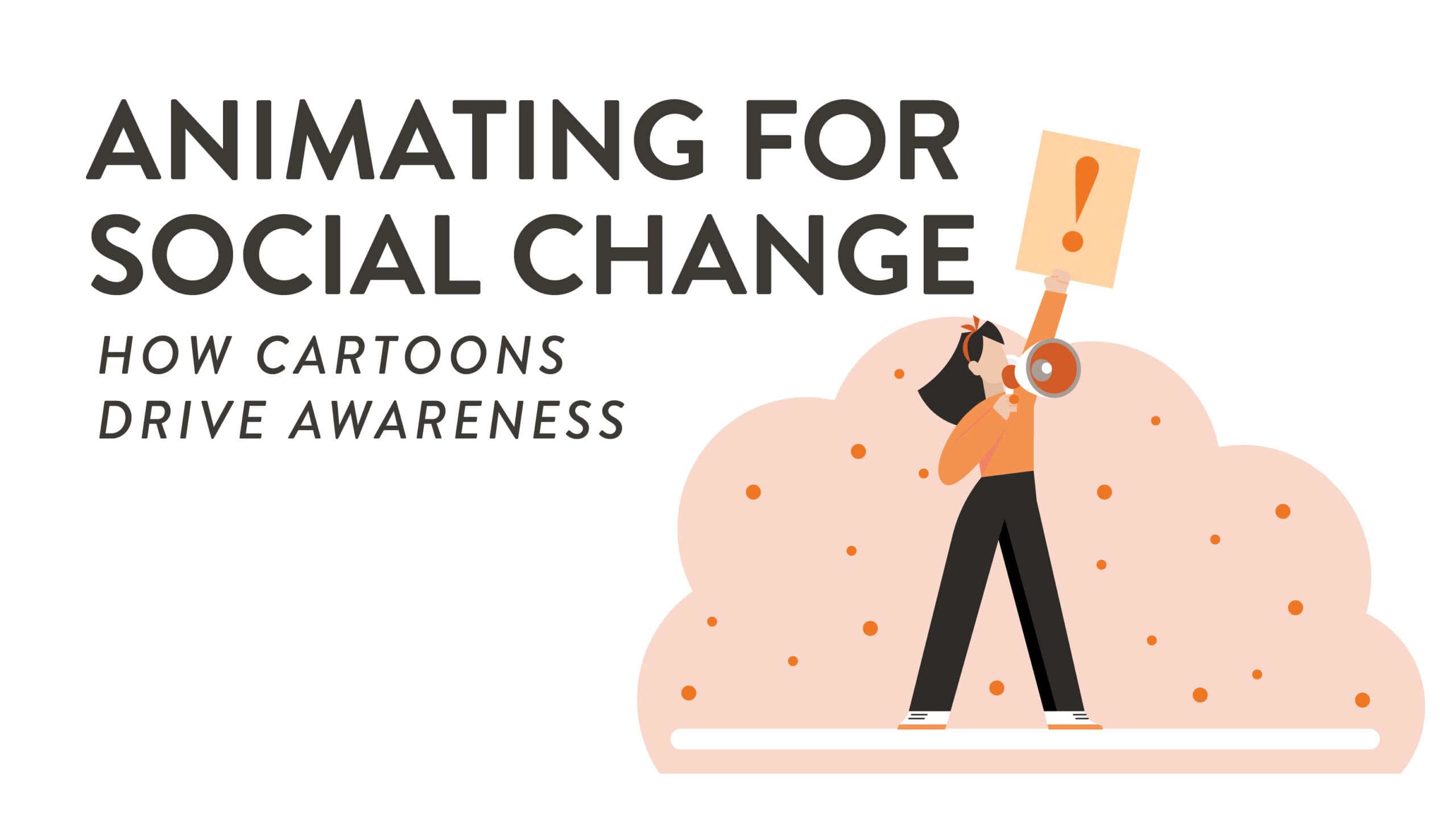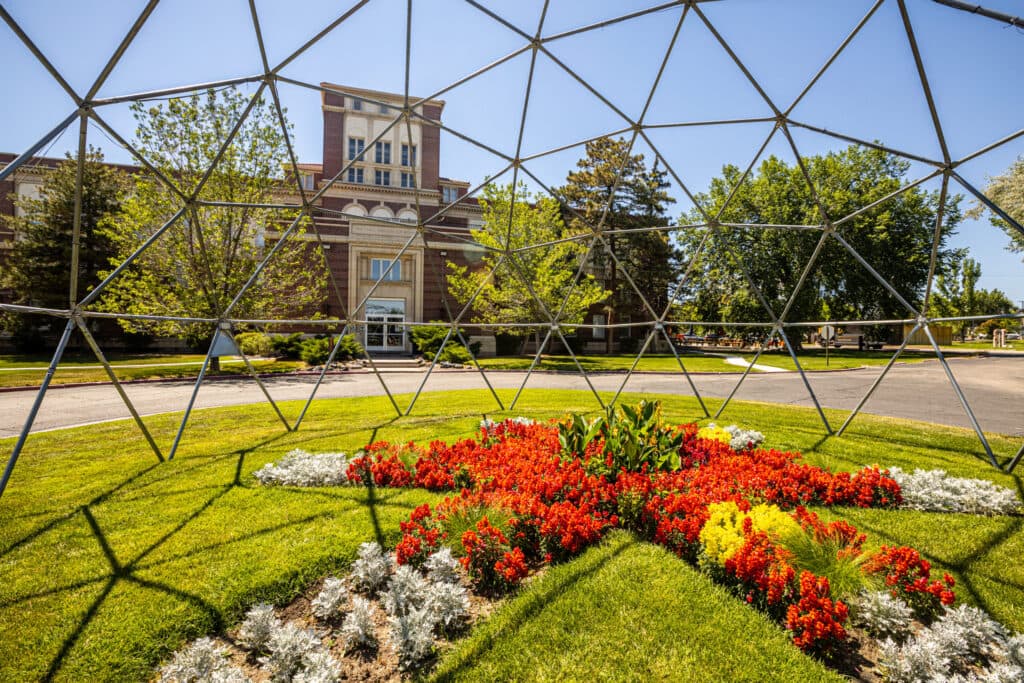Equipped with captivating visuals and relatable storytelling, cartoon animations have the power to influence society in a variety of ways. In a world immersed by screens, from social media to television, cartoons are an increasingly popular way animators, writers, and creatives highlight social issues online.
Animation has played a pivotal role in shaping our collective consciousness and sparking meaningful conversations on issues in our society. Whether to inspire, educate, or challenge societal norms, let’s learn how animation is addressing social issues head-on.
Power of Cartoon Animation
According to The Animation Guys, “It doesn’t matter what the subject matter is, animation has the ability to grab it by the scruff of the neck and drag it from the depths of mundanity.” That said, the power of cartoon animation is undeniable in its ability to take a topic that might be boring on paper and turn it into an engaging piece of media that can rise above language and culture. Whether it’s uploaded to social media or streamed online, those that animate have an undeniable influence on shaping our perceptions and understanding of the world around us.
With an artist’s ability to engage a large audience, cartoon video holds a special place in the hearts of many fans. From entertaining us with humor to tugging at our heartstrings, many viewers connect with cartoons on an emotional level, making it an effective medium for addressing social issues.
Role of Animation in Society
Animation plays an important role in society by amplifying voices, shedding light on marginalized communities, and highlighting critical social issues. Through well-crafted storytelling and compelling visuals, animators can grab our attention and urge us to think critically about the world we live in. It offers a unique platform for artists to express their perspectives and engage viewers in important conversations.
According to The National Library of Medicine, “Animation is capable of attracting a large audience in every field. As a result, most people are exposed to this interesting field of knowledge.” With such a widespread popularity of the medium, it’s important for creatives to promote the correct messages that will benefit society as a whole.
How Animation Addresses Social Issues
There are many avenues cartoons can take to address social issues. Some creatives might depict a diverse set of characters and others might develop plots that relate to current events. Overall, animation serves as a mirror to society, reflecting its values, beliefs, and challenges.
“Animation can be used as a tool for societal improvement by taking advantage of interdisciplinary research, critical thinking, and collaboration,” TypeSet states. Animated content has the potential to influence attitudes, challenge norms, and foster empathy among viewers. Let’s take a deeper look at how animation breaks stereotypes and promotes equality and justice.
Breaking Stereotypes
By challenging preconceived notions and offering different perspectives, animation helps to foster understanding and acceptance, encouraging us to look beyond our own views. Animators can use a variety of tactics to promote a more inclusive society, from portraying marginalized characters to representing underserved demographics. All of these help break stereotypes in communities around the world.
Promoting Equality and Justice
According to the Bureau of Labor Statistics, a career in animation is growing faster than average at eight percent. With an industry that shows no signs of slowing down, it’s clear that animation can be a powerful tool for promoting equality and justice. “With an ever-growing digital landscape, social activists, NGOs, and even governments are employing animation to raise awareness, inspire action, and educate the public on a variety of social issues, ranging from environmental conservation to human rights,” The Visual Communication Guy explains.
Whether it’s addressing gender inequality or social injustices, animated films and series have the ability to shed light on important issues and inspire viewers to take action. Cartoon animation content often serves as a platform for advocating for equality and justice, shedding light on systemic injustices and inspiring positive change.
Early Pioneers
Throughout history, animators have paved the way for using cartoons as a means of social commentary and advocacy. Let’s take a chronological look at some of the most notable works.
Winsor McCay’s “The Sinking of the Lusitania” (1918)
Our first pioneer is Winsor McCay’s “The Sinking of the Lusitania,” created in 1918. This animated short film depicted the tragic sinking of the RMS Lusitania, the world’s largest passenger ship, during World War I. McCay’s film, which debuted in New York City, drew attention to the horrors of war and the devastating impact it had on innocent lives. McCay highlighted the industry’s potential to convey powerful messages to a wide audience.
Walt Disney’s Propaganda Films (World War II)
During World War II, Walt Disney Studios produced a series of propaganda films that aimed to boost morale and contribute to the war effort. These animated shorts used cartoons to convey important messages and shape public opinion, demonstrating the persuasive influence of animation. “To support the war effort, Disney designed emblems for the military, produced propaganda films and lent its iconic characters’ likenesses to different government agencies, among other activities,” Smithsonian Magazine writes.
Modern Animated Films
Modern animated films continue to tackle important social issues through thought-provoking storytelling and visuals. In the twenty-first century, technology has made animating for social change easier than ever for studios and independent artists. In fact, many animators advocating for an important cause self-publish on social media platforms.
Animal Farm (1954)
“Animal Farm,” a 1954 adaptation of George Orwell’s classic novel, uses animation to critique and reflect on the dangers of corruption and abuse of power. The film uses animal characters to bridge complex ideas that can be understood by viewers of all ages. By shedding light on these topics, it educates the public and allows society to better learn from the mistakes of others.
Spirited Away (2001)
Hayao Miyazaki’s masterpiece, “Spirited Away,” takes viewers on a journey through an enchanting spirit world while the animation explores themes of environmentalism, greed, and loss of identity. This animated film captivated audiences around the globe and showcased the power of animation to create immersive worlds that mirror society’s biggest problems. “Spirited Away shattered preconceived notions about the art,” Time Magazine explains.
South Park (1997-Present)
“South Park,” an ongoing series that first aired in 1997, has become renowned for its bold approach to social and political commentary. By employing satire and humor, the creators of “South Park,” Trey Parker and Matt Stone, fearlessly tackle controversial topics through simple animation, forcing viewers to question societal norms. Over hundreds of episodes, there are a variety of social justice topics tackled throughout the show’s history garnering news mentions and sparking online debate.
Wall-E (2008)
Pixar’s “Wall-E” presents us with a dystopian future where humanity’s excessive consumption and disregard for the environment have led humanity to leave Earth. Through its stunning visuals and animation, the film embodies sustainability, highlighting the importance of environmental responsibility and sparking conversations about our impact on the planet. “Humans should think less about rampant consumerism and instead focus on protecting the planet while we still can,” Yahoo Movies explains.
Contemporary Animators Pushing Boundaries
Today, contemporary animators continue to push the boundaries of animation, creating thought-provoking works that challenge societal norms and spark conversations. Let’s explore a few examples:
The Oatmeal Comics
“The Oatmeal Comics,” created by Matthew Inman, combine humor and insightful storytelling to address a wide range of topics, from relationships to mental health. Through his webcomics, Inman engages with his audience and invites them to reflect on personal and societal issues with a blend of wit and empathy. These animations have earned Inman millions of followers and a platform to discuss social issues through animation.
Hair Love (2017)
Oscar-winning film “Hair Love,” a heartwarming animated short film by Matthew A. Cherry, explores the relationship between a father and his daughter as they navigate the challenges of styling her natural hair. By celebrating the beauty of diversity and challenging societal beauty standards, “Hair Love” became a leading voice for inclusivity and representation. “‘Hair Love’ offers the kind of inclusion audiences and others have been calling for in Hollywood,” The New York Times writes.
Ready to Drive Awareness Through Your Animations?
“Animation offers a unique and powerful medium for promoting social justice causes, raising awareness of important issues, and inspiring change,” LinkedIn author Nikhil Salvi explains. So, what are you waiting for? If you’re passionate about animation and its potential to drive social change, consider exploring the world of animation further by learning about Rocky Mountain College of Art + Design’s online and on-campus degree programs today.

